Navico Broadband Radar 4G, the launch demo
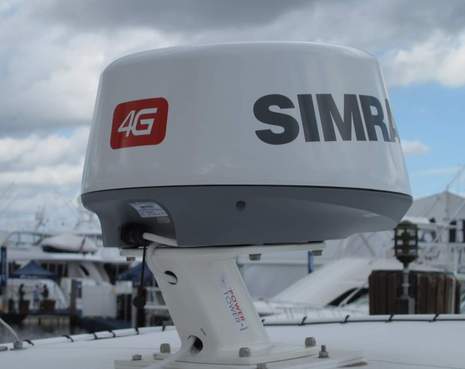
Holy cow! The just-announced-today Lowrance/Simrad 4G Broadband Radar may look just like the original BR24 and its 3G upgrade, but there's some stonishing NEW technology under that dome. In fact, Navico engineers seem to have overcome what I thought was an immutable law of radar physics, that beam width is purely a function of radar antenna length. I understood how the original FMCW solid state transmit technology -- which is something like CHIRP sonar -- could produce better range resolution, but the BR24 and 3G are still limited to a 5 degree horizontal resolution just like all the other radomes in that 20" size range. Not 4G!...
Navico calls the new feature "Beam Sharpening" and while I have no idea how they do it, yesterday morning they demonstrated it pretty convincingly. Actually, they took us to a spot in Fort Lauderdale where I had photographed the crisp target separation seen by what was a new Raymarine 4-foot open array HD radar back in 2007. Check that image versus the left hand window below, in which the new 4G's "Target Separation" control has been turned to High. The right window shows an unsharpened 4G beam width while the left is purportedly equivalent to the 2.6 degree beam width normally associated with four foot antennas. When I wondered if the 4G could separate two small targets that were within the normal 5 degree beam and at the same range, the highly enthusiastic chief engineer Don Korte -- "this is the best radar I've ever been involved with" -- whipped out some screen shots and a photograph that showed a tight flock of kayaks resolved. You can see the same imagery yourself on page 15 of Navico's new Essential Guide to Broadband Radar, which should be online later today...
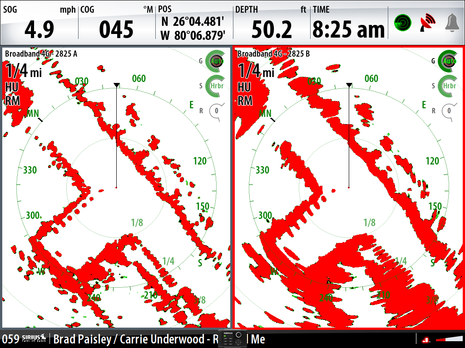
And, yes, that is 4G doing independent dual ranges on the Simrad NOS screen above, though both windows are set to the same range. I've learned to appreciate dual range displays on other radars but have often been frustrated with certain limitations. What a nice surprise then when I asked Korte if it could do chart overlay using even one of the ranges, and he showed us how 4G can not only overlay both ranges but put those in separate windows with pure radar alongside. Wow. But do note that this feature, and a few others, only work on certain processors like the Simrad NSO and NSE (not the NSS). Each range will also support 10 MARPA targets for a total of 20...
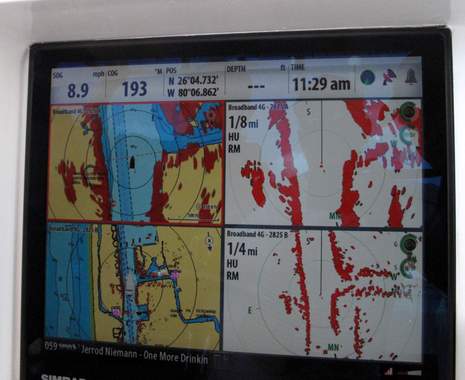
There's lots more to say about 4G, including a claimed 100% range improvement over the original BR24, but I'll close with this shot of Don Korte pointing out the teensy "magnetrons" on the 4G printed circuit board. 4G is still very much an instant-on, super low emmission solid state radar. It's just that now we're learning that that can mean more than we thought.
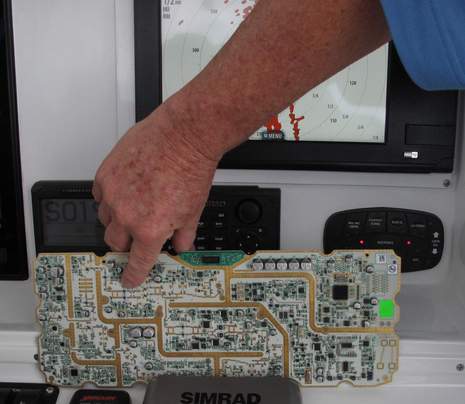
So it turns out that Raymarine and Navico are not the only ones who like to test their radars around the Ft. Lauderdale submarine pen. This is purportedly a screen shot of a Furuno DRS4D running at 15 knots. Note how well this 24" antenna resolves its intrinsic 4 degree beam width. Note too how it is imaging some of the vessel's wake, which suggests a minimal area obscured by magnetron main bang:
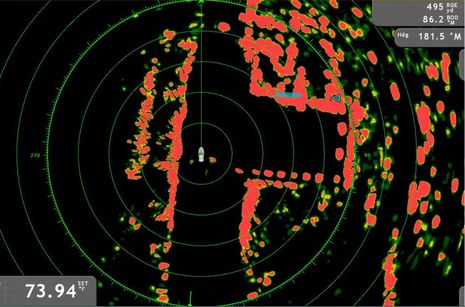

 Share
Share
O. M. G. I may be dining on some of my own timeless verse.
Please Garmin, give me some hope you have something coming along in this neighborhood!